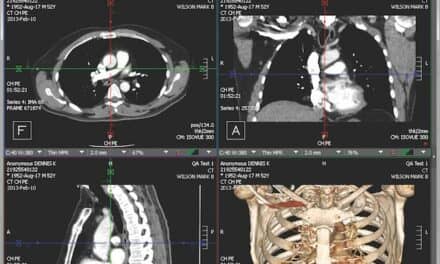How better data quality can improve the healthcare supply chain
By Angela Fernandez
The acquisition and use of data is a hot topic in many circles, including healthcare. While concerns around the control and privacy of personal information dominate headlines, there is an upside to advancing data and analytics for businesses and supply chains.
Within that data lie key pieces of information that can be collected, exchanged, and understood by stakeholders to activate process improvements. In healthcare, for example, a growing abundance of information can be shared between networks of suppliers, wholesalers and distributors, logistics providers, hospitals, and clinicians to support innovations in patient safety and care, as well as meeting regulatory requirements and delivering operational efficiencies for all of them.
Why Providers Need Better Supply Chain Data
Healthcare providers need complete, accurate information about the products they use at the point of care, including their availability and movement through the supply chain. Without it, they can’t be sure the right products will be available when they need them. Last year’s difficulties with finding and obtaining essential supplies and equipment (e.g., ventilators) showed how important a robust, data-rich, interoperable system for tracking products can be.
In addition, problems managing orders, inventory, costs, operations, planning, and more can all arise from deficient data. The reverse is also true: Reliable product and supply chain data supports and enables improvements in all these areas. Ultimately, readily available, complete, and accurate information about the location of medical products will help the healthcare industry to be better prepared when the next crisis hits.
Two interconnected priorities are key to these improvements: full commitment by suppliers, wholesalers, and providers to a robust data-quality program, and implementation of global standards to define data content and format for effective automated data exchange between stakeholders. The standards enable interoperability across different systems and help satisfy regulatory requirements for device tracking and traceability. Fastidious internal data management programs ensure product and supply chain information is always accurate, up-to-date, and ready for use in clinical and operational processes and decision-making.
How Data Standards Help Solve Supply Chain Problems.
System-wide adoption of globally recognized data standards for the identification of products and locations creates tremendous benefits for all stakeholders, from suppliers all the way to the patient.
Only by using interoperable data standards can healthcare organizations effectively communicate with one another in a common language to support patient safety, improve analytics and efficacy reporting, and reinforce a more efficient supply chain with improved visibility and traceability.
Standardizing this data to promote interoperability is a major tenet of the FDA’s Unique Device Identification (UDI) Rule. Specifically, the rule requires medical device labels and packages to be marked with a unique device identifier (UDI) in both human-readable text and a machine-readable, automatic identification and data capture format such as a barcode. Those identifiers must then be registered in the FDA’s Global Unique Device Identification Database (GUDID). One such product identifier solution provider, for example, is GS1, an FDA-issuing agency for UDI, which utilizes its GS1 Global Trade Item Number (GTIN).
With the UDI contained in a barcode, it can be scanned at every touchpoint in the supply chain to provide reliable updates on the product’s journey, as well as at the point of care for inventory control and even inclusion in a patient’s electronic health record. Combined with the use of Global Location Numbers (GLNs) to uniquely identify all the places where the product is handled, this system of standards facilitates accurate tracking and tracing throughout the supply chain and at the point of use.
When included in clinical records, product identifiers can facilitate improved visibility into medical device safety and impact on clinical outcomes. The use of standards can substantially improve time, cost and efficacy of product recall and expiration business processes for medical devices and pharmaceuticals, as well.
Recently, the Association for Health Care Resource & Materials Management, the Healthcare Supply Chain Association, the Strategic Marketplace Initiative, and GS1 US collaborated to recommend accelerating the adoption and use of data standards as a foundation for improving supply chain transparency, planning and resiliency while reducing administrative burden and costs.
These industry leaders, based on discussions with their respective industry members, believe that broader adoption of standards across the healthcare supply chain, coupled with high-quality data, could have helped prevent many of the supply chain disruptions that occurred early in the COVID-19 crisis by enabling effective exchange of reliable, trusted data. They agree, and are advising their members, that full adoption of global standards helps improve product transparency and data driven demand planning and forecasting.
Proof in Practice
Full adoption of data standards in healthcare is still building, although the standards are not new to the industry. Some healthcare providers have proven that using globally recognized data standards to identify and track medical devices can support operational improvements and patient safety. Following are some examples of healthcare providers using GS1 standards.
- The Franciscan Missionaries of Our Lady Health System, a non-profit healthcare system serving more than half of Louisiana’s population, is able to share accurate and complete product data within its system and with its suppliers—making sure that the right products are delivered just-in-time for use, for the right patients and the correct procedures.
- Mercy uses the standardized identification numbers and barcodes to record the exact products used in every OR procedure, reducing patient risk and allowing accurate cost evaluation. And the Veterans Affairs (VA) Medical Center in Miami says that scanning barcodes improves operational efficiency by enabling easy, accurate tracking of implants and other medical devices, enhancing patient safety.
- Siemens Healthineers used UDI compliance efforts and GS1 Standards implementation to launch systemic data governance, data quality, and data collaboration programs; they assigned a GTIN to every Siemens Healthineers product and instituted processes to ensure product information is complete and accurate, which was then linked to a Global Data Synchronization Network. Now, information on all their products is available through the GDSN, and they use it to share product information with trading partners and to submit the required data set to the FDA’s GUDID in one single process.
Is Your Data Ready for Sharing?
Full benefits of a digitized, interoperable system can only be realized when all trading partners are not only implementing the standards to provide key supply chain data, but also are managing their data to ensure it is complete, accurate and always up to date.
Improvements are proportional to the integrity of the data itself, the organization’s diligence in maintaining it in real time, and its interoperability and sharing practices. When this information is exchanged throughout the supply chain, it can be used to help ensure essential products are available when and where they are needed.
Interoperable data exchange between suppliers, distributors, and providers is the key to patient safety and supply chain improvements. This is really where the “rubber meets the road”—the quality of the data shared among stakeholders will determine how successfully it facilitates positive change.
So, every healthcare product supplier needs a solid data management system to ensure product information is always accurate and up-to-date. It requires company-wide support and resources.
Organizations that have implemented successful data quality programs categorically advise close collaboration with supply chain partners to ensure compatibility. They also always stress the importance of commitment, emphasizing it is not a “one and done” operation, and top-down support is crucial. This includes making sure new items are accurately set up, and everyone responsible for data is fully aware of the standards and rules. It is important, ongoing work, and maintenance is a huge portion of it.
The full implementation of a high-quality data program will provide a more cohesive, well-run supply chain, enabling stakeholders to understand and communicate with each other throughout products’ life cycles. It will simplify integration of device use information into data systems, especially when barcodes are used for fast, accurate data acquisition, recording and retrieval.
Clear and readily accessible communication of product attributes and outcomes will help clinicians and procurement staff to evaluate their purchases and to identify any adverse effects that can be used to inform future purchasing decisions. Device efficacy will be easier to track.
Product recalls will be expedited to support improved patient safety, and they will be laser-focused, saving time, improving accuracy to prevent the use of recalled products, and reducing costs for unnecessary removal of unaffected devices.
Angela Fernandez is vice president of community engagement at GS1 US Healthcare.





